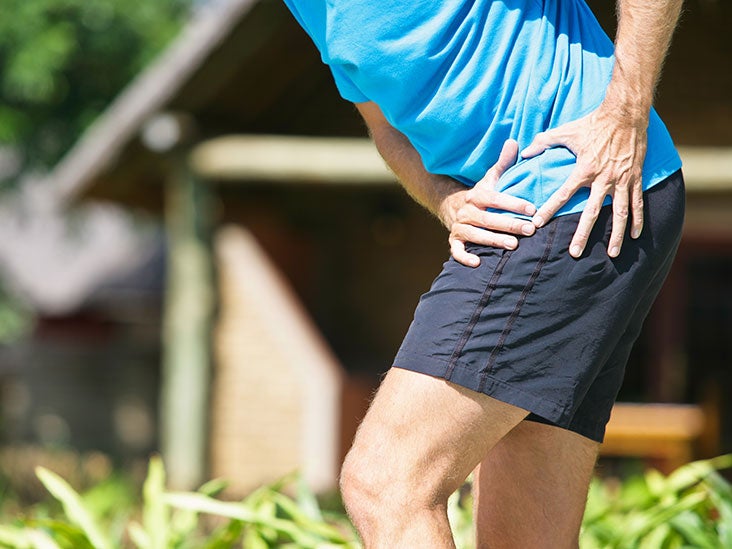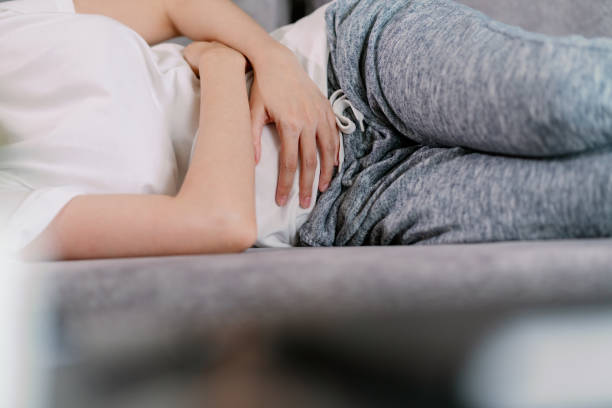Where Is The Groin?
The groin is a part of your hip that connects your stomach to your thigh. It’s the point where your abdomen meets your legs. There are five muscles (adductor brevis, adductor longus, adductor magnus, gracilis and pectineus) in the groin area that work together to move the leg.
What Is Groin Pain?
Groin pain is a type of pain that occurs where the inside of your upper thigh meets your abdomen. It’s not the same as testicular pain. However, testicular pain can sometimes migrate to your groin.
Groin discomfort can be experienced in a variety of ways. It might be minor or severe depending on the circumstances. It could be a dull, acute, throbbing, or even burning pain. Groin pain can be diagnosed and treated in a variety of ways based on the symptoms and underlying cause. Find out more about the cause of your groin pain (Ask a Doctor).
What Causes Groin Pain?
A strain of the ligaments, muscles or tendons in the groin area is the most prevalent cause of groin discomfort. This happens to a lot of people who participate in sports. The pain could start right away or develop over time. Continuing to participate in the sport or activity may aggravate the injury.
Groin pain can also be caused by the following conditions:
Inguinal hernia: This occurs when fat or a loop of the intestine presses on a weak area in the muscles of the lower abdomen. A protrusion in your groin or scrotum may be visible. A quarter of all men will experience this difficulty at some point in their lives. If the intestine or fat becomes trapped in the abdominal muscle wall, it may lose its blood supply. This is known as a strangulated hernia.
The signs and symptoms include:
- Redness or a sharp pain near the protrusion.
- Not being able to defecate or pass gas.
- Nausea and vomiting,
- High fever
If you are experiencing any of these symptoms, seek medical attention immediately. A strangulated hernia is a potentially fatal condition. Surgery may be required to treat the hernia.
Epididymitis: Epididymitis refers to the swelling of the epididymis, the tube where sperm is deposited. It is usually caused by an infection.
The following are some of the signs and symptoms:
- Slow development of pain on one side of the scrotum.
- Pain while passing urine
- Fever
- Milky discharge from the penis
Orchitis: Orchitis is a condition in which one or both testicles enlarge, causing fertility issues. Orchitis can be caused by the same pathogen that causes epididymitis. Both of these conditions may occur concurrently. Orchitis may sometimes be triggered by the mumps virus. Antibiotics can be used to treat either condition if bacteria is the cause of the pain.
Prostatitis: Prostatitis is a condition in which the prostate gland swells or becomes infected. It may also be accompanied by difficulty in passing urine in addition to the pain.
Prostatitis might go away on its own in certain cases. However, if it is caused by an illness, antibiotics may be required. Consult a doctor to determine the appropriate treatment.
Hip-related issues: Hip pain might spread to your groin if you have arthritis or other issues with your hip. It normally develops gradually and is exacerbated by driving or sitting in a low chair. To treat the condition, a doctor may suggest physical therapy and anti-inflammatory drugs. If these don’t work, your doctor may then recommend surgery.
Testicular torsion: This occurs when a testicle becomes twisted inside your scrotum. The pain might resemble getting kicked in the crotch. It’s a medical condition that requires immediate attention as the blood supply of the testicle is cut off by the twisting (torsion). The testicle may die if it is not medically untwisted within a few hours. This condition is more common amongst male adolescents.
Testicular cancer: Testicular cancer typically leads to a painless lump being developed in or on your testicle and it might be accompanied by pain. It is a rare type of cancer but it can almost always be treated and cured if identified early.
Kidney stones: These are tiny crystals that originate in the kidney and can become lodged in the tubes that lead to the bladder. The pain cause might be excruciating. It commonly occurs in the back or belly, but it can also occur in the scrotum or at the tip of the penis. If the stone is particularly large, surgery may be required.
Kidney infection: This typically occurs when an infection in your bladder spreads to one or both of the kidneys. Frequent urination, as well as blood or pus in the urine, are all possible symptoms. A type of bacteria known as E. coli is usually responsible for the infection. A doctor may prescribe antibiotics to treat kidney infections.
If your groin pain is severe or does not improve within a few days, seek medical attention.


